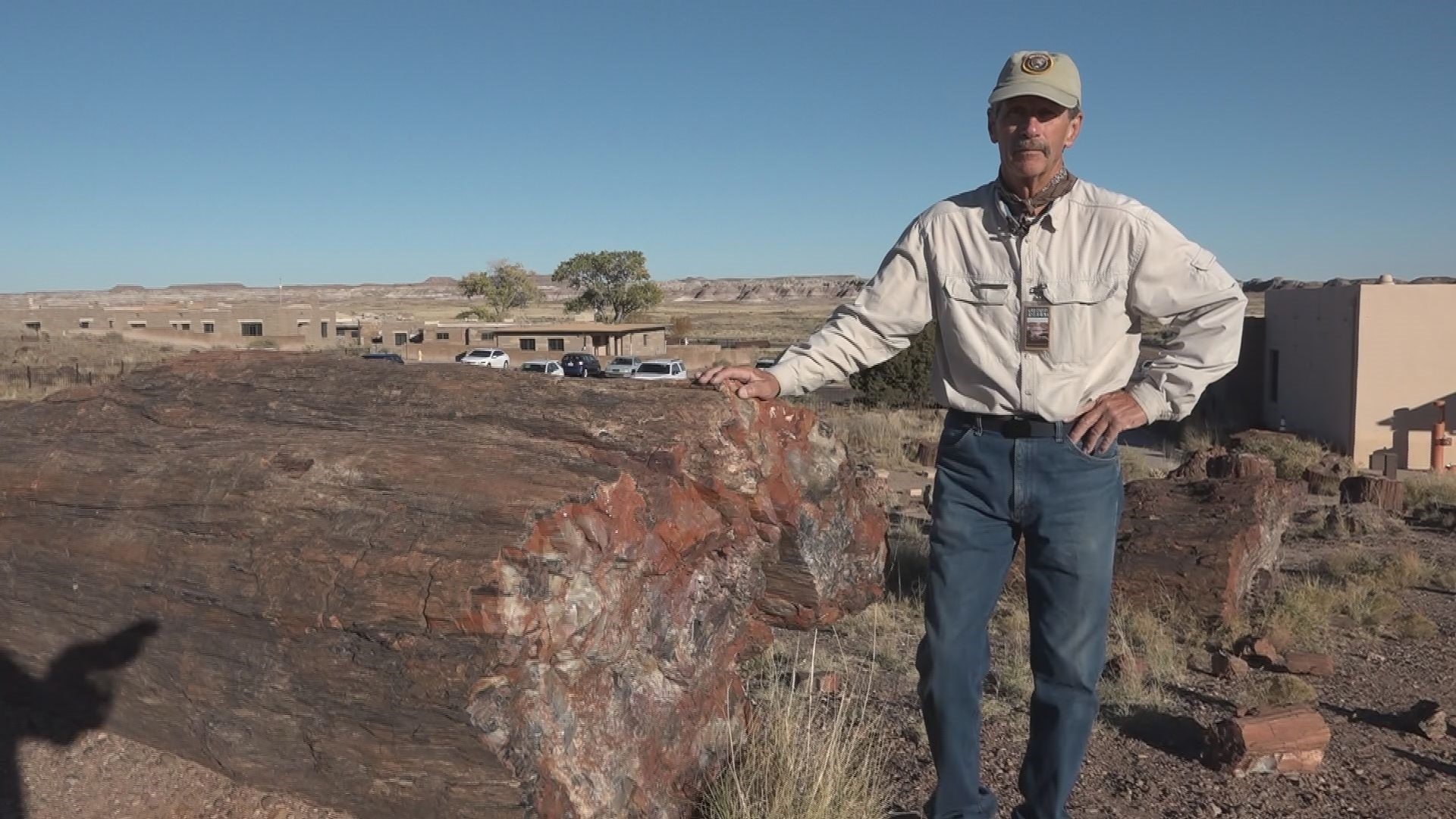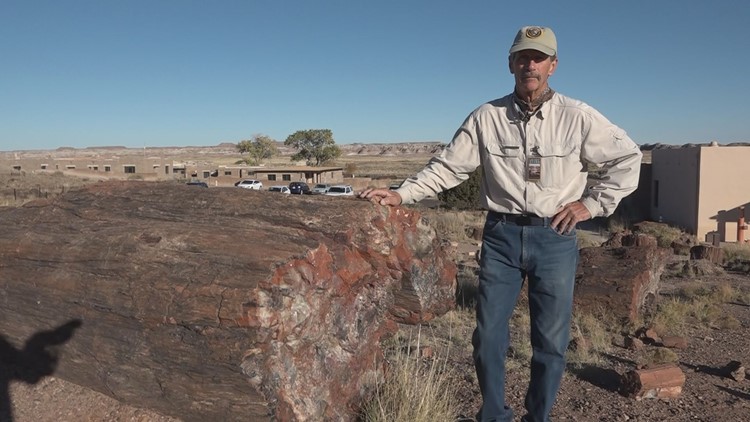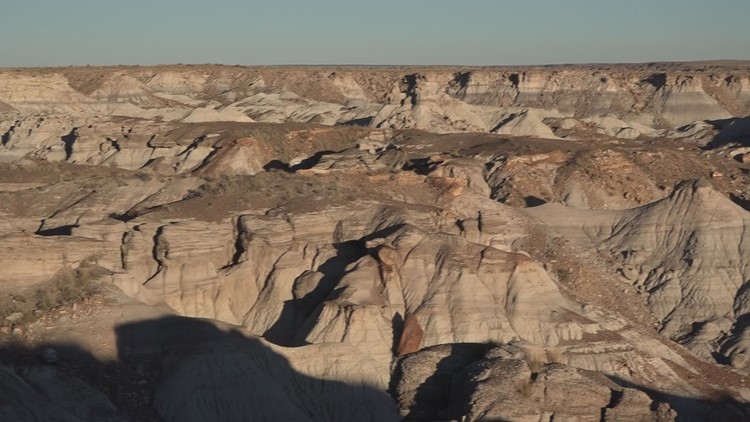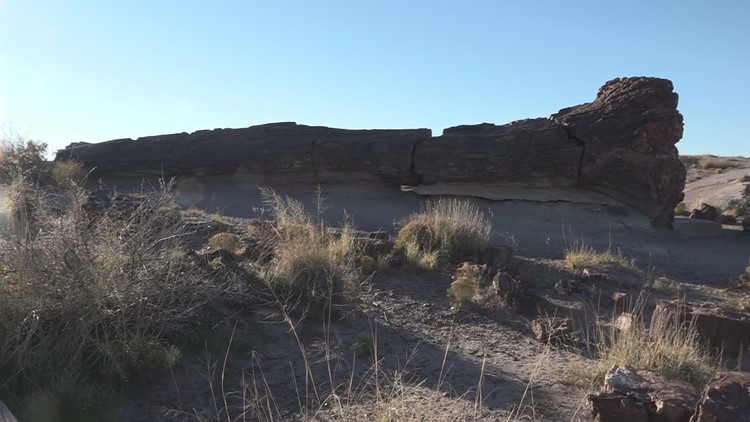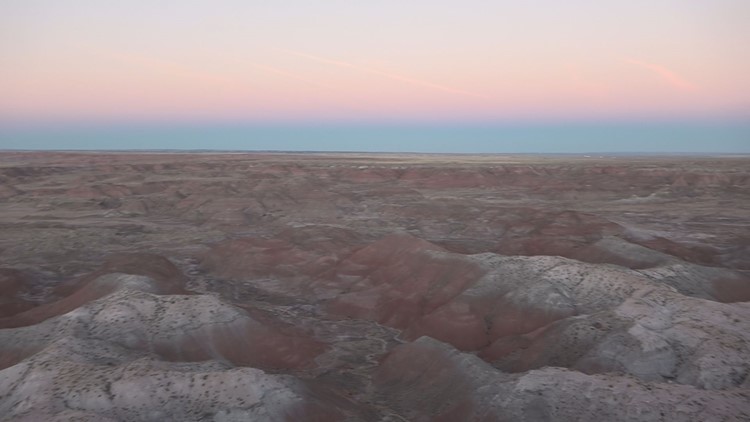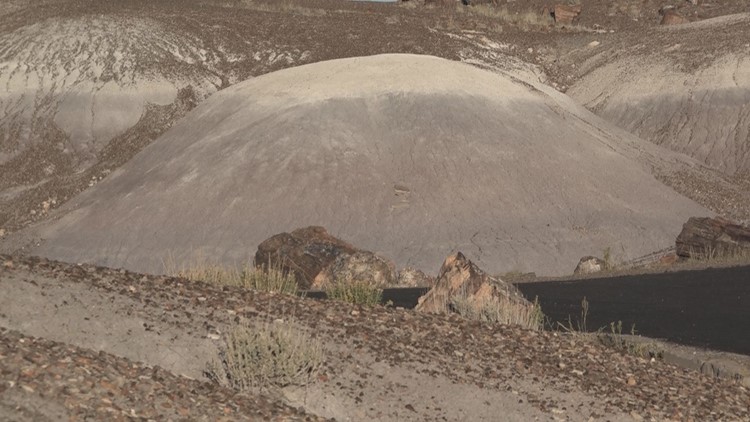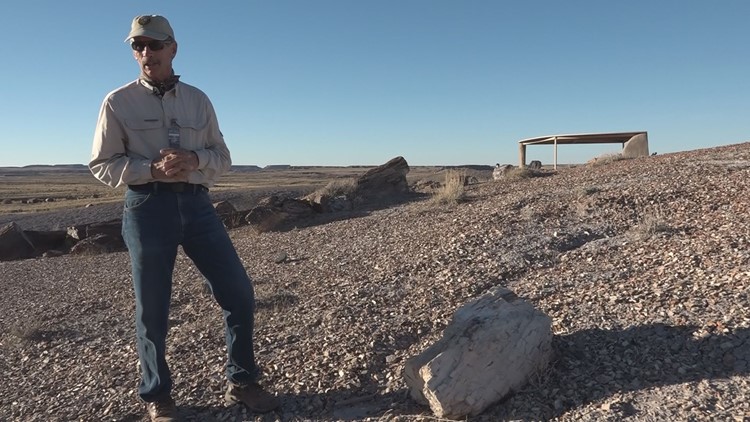PETRIFIED FOREST NATIONAL PARK, Ariz. — When you step inside the Petrified Forest National Park, you step back in time. The geological formations and fossils you find there take you so far back in time that it’s hard to comprehend.
The soils of the Petrified Forest were laid down 200+ million years ago during the Triassic Period. It was a period of time when dinosaurs roamed the Earth along with other animals and just before the supercontinent Pangea was on the verge of breaking apart.
That disruption of Pangea is what precipitated the park’s existence. As the supercontinent broke apart, the Triassic trees that make the park famous fell and accumulated in river channels. Those rivers carried them to the spots they now occupy in the park and they were covered in volcanic sediment.
Over the millions of years since the disruption, the trees of the Petrified Forest have been slowly fossilizing, turning into minerals, technically making them no longer trees. The most well-known feature of the park is this petrified wood.
“It took millions of years for the tree-like structure be replaced with mineralization,” Petrified Forest National Park guide Dan Carroll said. “What you see is no longer a tree. All that material is long gone. Basically, it’s a quartz structure with a little bit of minerals in it.”
In the late 19th century, petrified wood became an object of fascination. People would arrive by train in the nearby town of Adamana, Arizona, take a wagon out to where the petrified wood was, put some of it on the wagon and take it home.
In 1906, then-President Theodore Roosevelt designated the area as the country’s second national monument. The monument eventually became a national park in 1962 and in 2004 President George W. Bush expanded the park from 93,353 acres to 218,533 acres.
“It came into the park system early. 1906 is early,” said Carroll. “[Roosevelt] was starting to realize that we needed to preserve some of this stuff. So, over time the park has continued to expand and evolve.”
Step back in time at the Petrified Forest National Park
The fossilized wood is scattered over various trails in the park. The mineralization process took place in different eras and gives the fossils a unique look depending on the era the process started.
The Giant Logs
The Giant Logs Trail features petrified wood that has turned a reddish-brown color from oxidized iron. The pieces originated higher up in the soil profile but over time have rolled down the hills they sit on and landed in their current locations.
The quartz structure within the petrified wood has also given the fossils a deceptively uniform look.
“What that amounts to is it can make these fissures where it looks like someone came out here and sawed this stuff. But it’s just naturally how it sheers off in segments,” according to Carroll.
The Crystal Forest
The petrified wood found on the Crystal Forest Trail at the park is markedly different looking than fossils found on the Giant Logs Trail. It is white in color and it is chipping.
The "wood chips" are found on the hills surrounding the trial and upon first glance, you would think it was gravel on the ground.
"It comes from logs that are from a different era. Millions of years difference from the more colorful stuff that we seem," said Carroll. "The minerals that were available at the time, as much iron wasn't available at that time. The composition is just enough different that it literally crumbles into these wood chips."
The Painted Desert
Aside from the fossils, much of the Petrified Forest features badland hills, flat-topped mesas, or sculpted buttes made up of sediment and rock formations that are stunningly colorful. Rain and wind exposure has caused extensive erosion in the area exposing the colorful bands of sediment.
The most well-known and dynamic of these geological wonders is an area of the park called the Painted Desert. The Painted Desert is primarily made up of what’s known as the Chinle Formation, which was deposited in the area also during the Late Triassic Period, some 200 million years ago.
Discoveries at the park are also helping to fill in the fossil record. Paleontologists actively work in the field at the park.
“They still discover new species as they work out here,” said Carroll. “More of the fossil record continues to get filled in by what they find here. It helps them figure out the lineage of how things evolved over time.”
To understand the importance of the park and to more easily comprehend the history of Earth, Carroll encourages people to experience the Petrified Forest National Park in person. The park offers a perspective on how the planet has changed, developed and continues to change over time.
“You have to come out here, see it and experience it,” said Carroll. “Then you get a feel for what you’re looking at, what this is about. You can look at pictures, you can talk about it, but you have to come out here and experience it, to get a feel for the vastness, the colors, the textures and the shapes.”
To plan a visit to the Petrified Forest Nation Park head here.
12 News Digital Exclusives
Go beyond the TV broadcast and learn more about unique Arizona stories on the 12 News YouTube channel. Subscribe for more digital-exclusive content!

